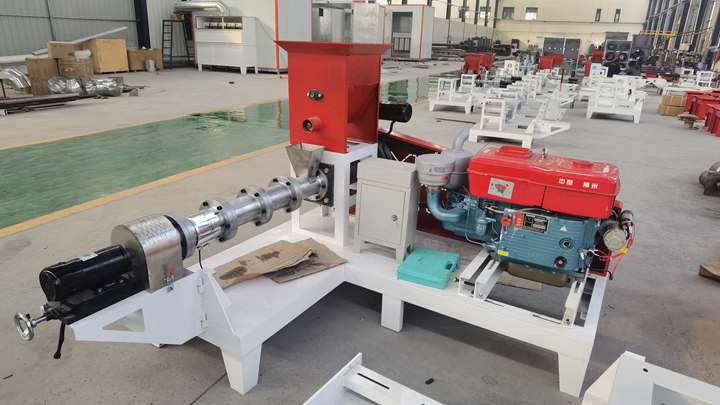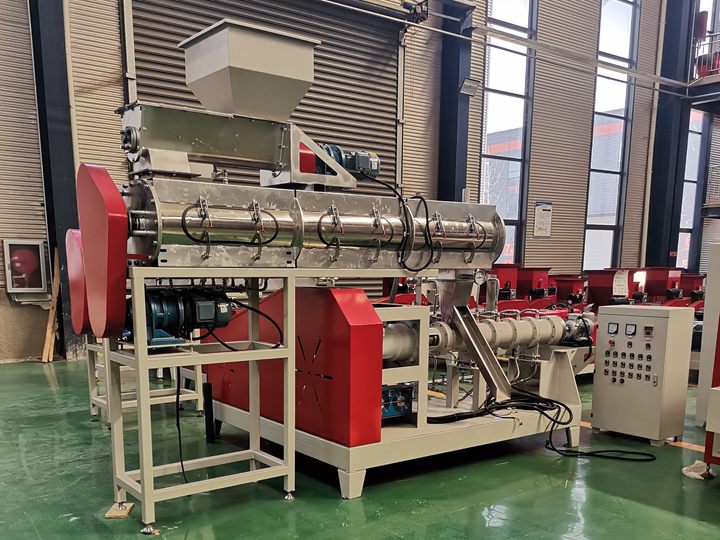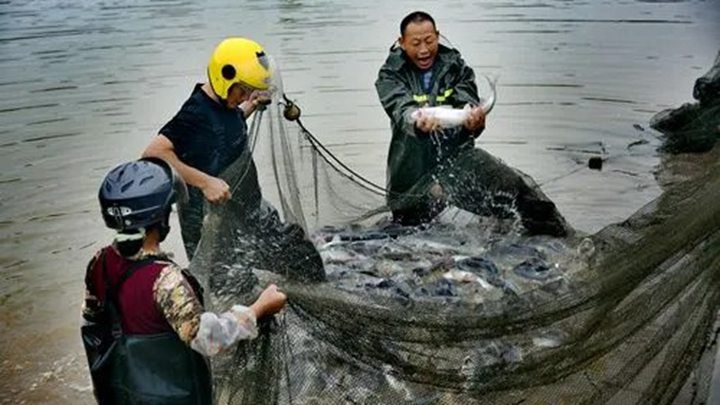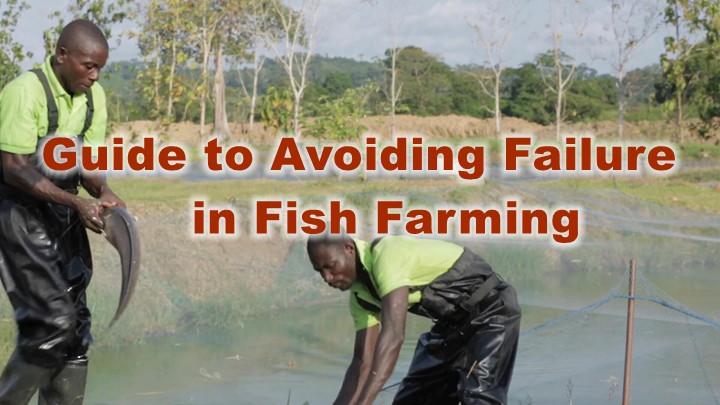The aquatic feed can be roughly divided into four types in terms of its shape. The first is powdered feed, which, as its name suggests, belongs to a kind of powdered feed; the second is soft pellet feed, and the third is powdered feed. The first is hard pellet feed; the fourth is what we call extruded feed in this article.
Extruded aquatic feed is a high-quality and environmentally friendly feed with low pollution, less waste, high efficiency, and a high conversion rate. The selection of floating fish feed machines is an important method to produce high-quality and safe animal products and ensure human health, and it is also the trend for the future development of the feed industry. It is an inevitable trend for the development of the aquafeed industry with the theme of green environmental protection at present and even in the future. We will show you the characteristics of extruded aquatic feed and the application of extruding technology in the production of aquatic feed.
The difference between dry puffing and wet puffing
Extruded feed is to use the extrusion and shearing effect of the screw and screw sleeve in the extruder to heat up and pressurize the material, and extrude the high temperature and high-pressure material out of the die hole, so that the volume expansion is completed due to sudden pressure reduction.
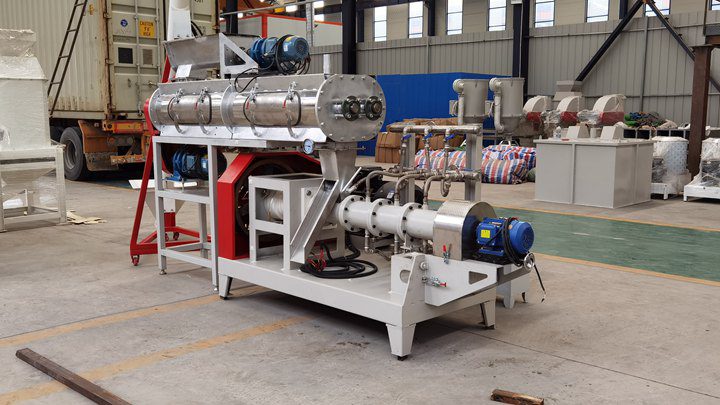
Puffing can be divided into two processing methods: dry and wet. Dry puffing does not need to add moisture to the raw material. The raw materials have not been quenched and tempered before entering the puffing chamber. The shear plate and the inner wall of the puffing cavity occur. The structure of the wet extruder is more complex than that of the dry extruder. The raw materials have been conditioned and tempered before entering the extruding chamber to improve the degree of maturation.
Principle of puffing processing
The typical puffing process is: Send the pulverized and mixed materials to the conditioner to give certain moisture and temperature. The quenched and tempered mixed material is sent to the puffing bin, and the material passes through different areas under the advancement of the high-speed rotating screw. Because of the friction, the temperature and pressure of the material gradually increase, and the pressure control lock between the areas further regulates the pressure. In extrusion temperature, the pressure reaches the mold at the conical spiral outlet of the extruder head, the temperature of the material rises to 135-160°C, and the pressure is 15-40 atmospheres. At this time, although the temperature of the water is higher than 100°C, the pressure is also much higher. At one atmosphere pressure, the onset of the jubilant phenomenon was avoided. When the material enters the atmospheric pressure environment through the ring die hole, the pressure suddenly decreases, the steam escapes quickly, and then the material expands strongly.
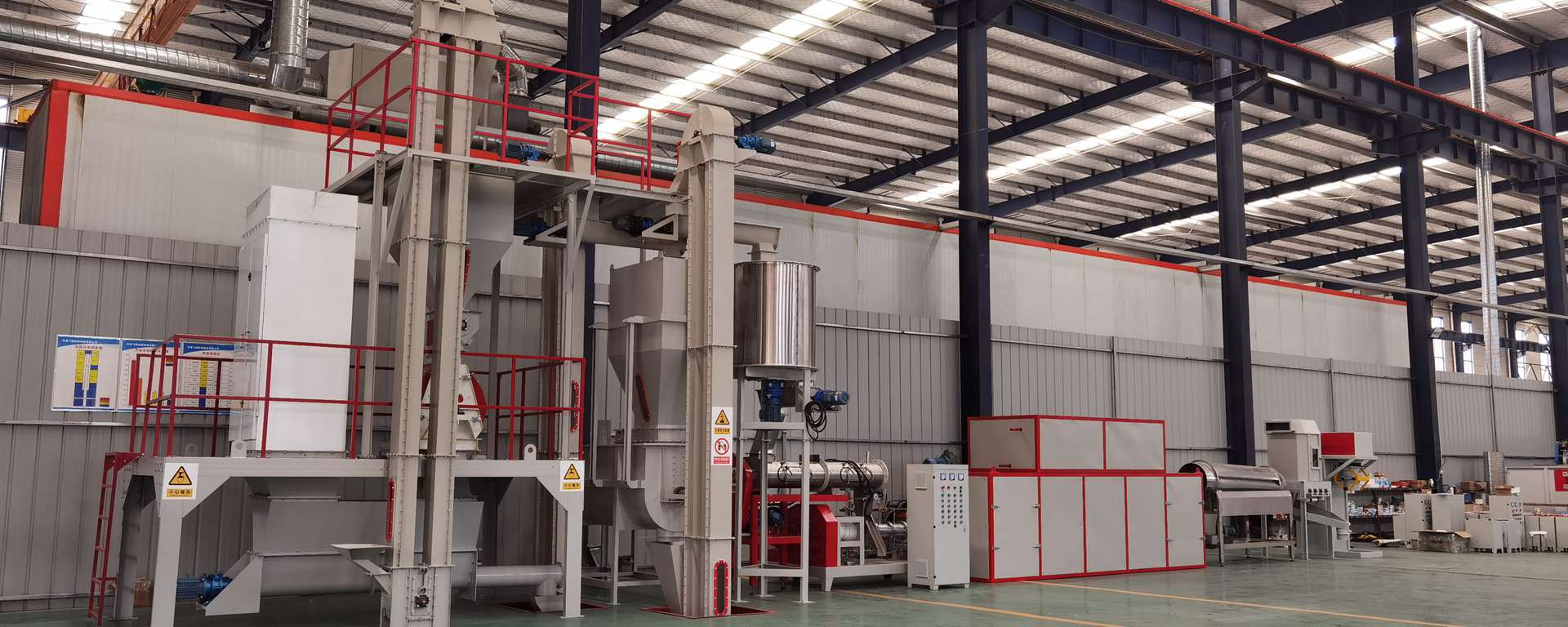
At present, the more advanced wet puffing is attributed to the high-humidity, short-time puffing process, which is considered to be particularly suitable for processing plant protein, starch, and grain products widely used in animal feed, because it effectively destroys growth inhibitory factors during its processing, and kill harmful microorganisms in raw materials.
The characteristics of extruded aquatic feed
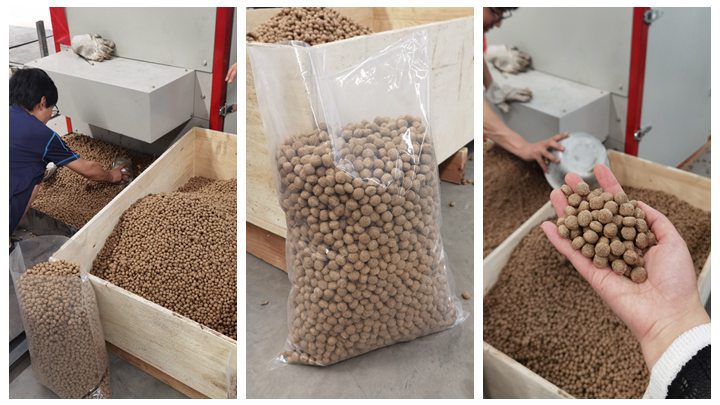
1. The feed has a long shelf life
Due to the drying treatment, the water content of the aquaculture extruded feed is lower, the particles are harder, the pulverization rate of the particles is reduced, and most of the microorganisms and fungi are killed during the extrusion process, so it has a longer shelf life and is convenient for storage and transportation.
2. Avoid spoilage of feed
Aquatic extruded feed is very stable in water, and generally does not dissolve within 2 hours (some as long as more than 10 hours), so it can avoid the dissolution and loss of nutrients in the feed and the sinking of the feed into the mud, and the residual bait can also be avoided. Simply pick it up and dry it, it can avoid the waste of feed to the maximum extent. According to the experiment, the general use of aquatic extruded feed can save about 10% of feed than powder or hard pellet feed.
3. Reduce water pollution
Aquatic extruded feed does not dissolve or sink in water, so it can avoid residual fermentation of feed in water, reduce the oxygen consumption of pollutants in water, and effectively reduce water pollution.
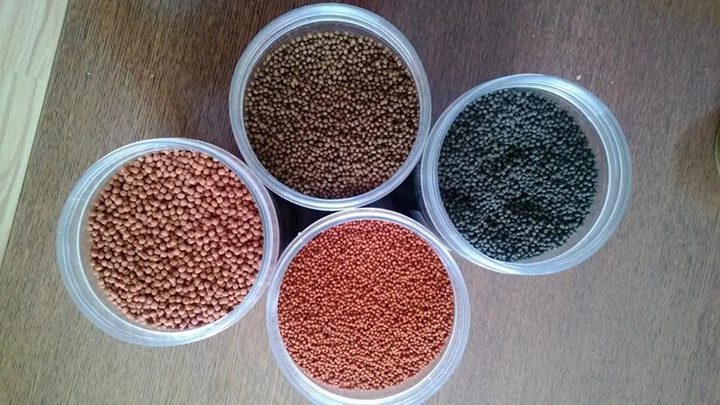
4. Avoid the onset of disease
The extruded feed can effectively kill harmful bacteria such as Escherichia coli, Salmonella, etc., and the extruded feed has strong water (oil) absorption, which can prevent the unclean feed from causing various digestive tract diseases.
5. It is convenient for farming
The extruded aquatic feed can be suspended on the water surface for a long time, and there is no need to set up a special feeding table when feeding, only a fixed point feeding is required. Fish need to come out of the water when feeding, can directly investigate the feeding status of the fish, adjust the feeding amount in time, and know the growth status and health status of the fish in time. It not only saves a lot of time but also improves labor productivity.

